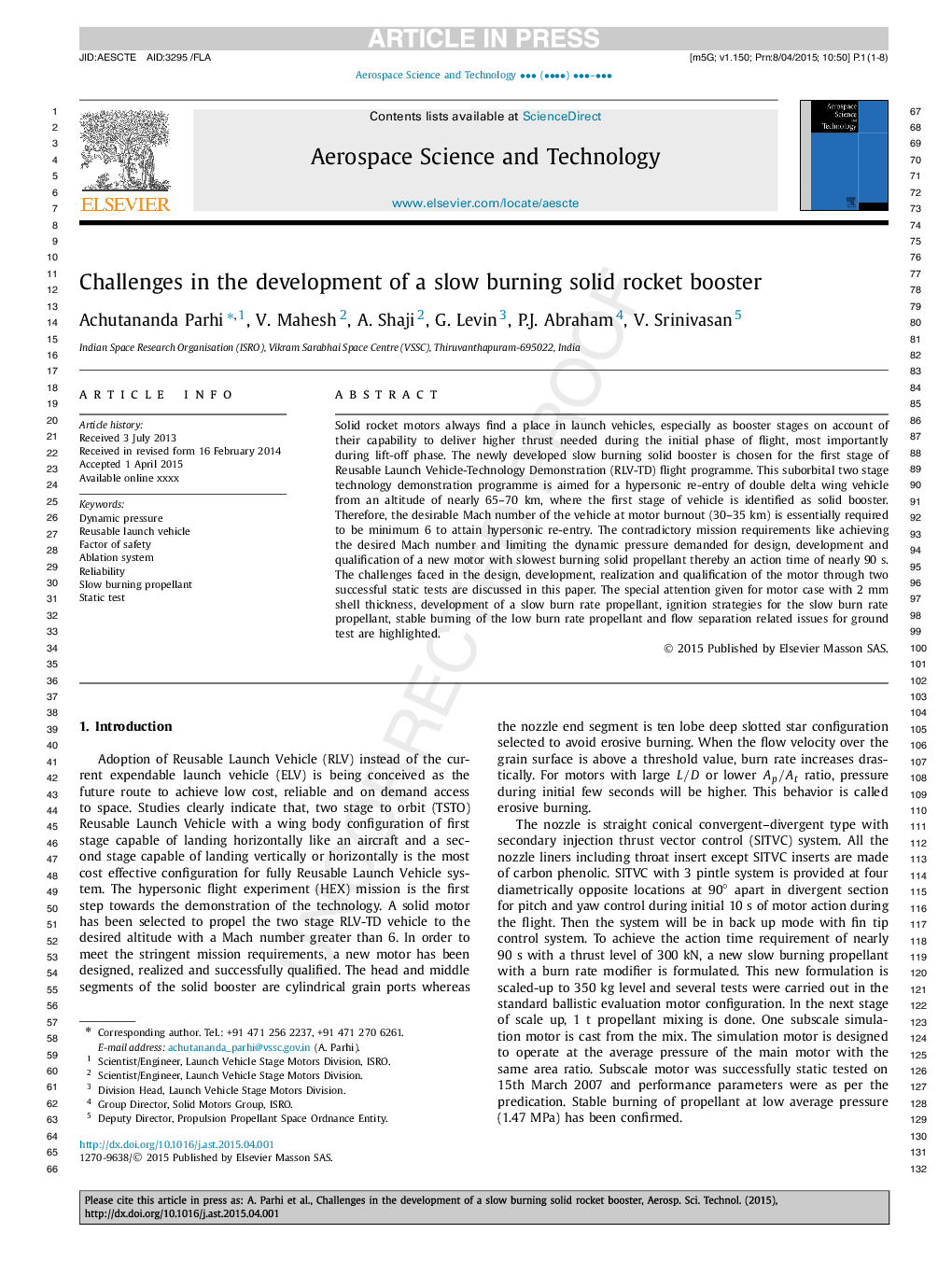| Article ID | Journal | Published Year | Pages | File Type |
|---|---|---|---|---|
| 8059019 | Aerospace Science and Technology | 2015 | 8 Pages |
Abstract
Solid rocket motors always find a place in launch vehicles, especially as booster stages on account of their capability to deliver higher thrust needed during the initial phase of flight, most importantly during lift-off phase. The newly developed slow burning solid booster is chosen for the first stage of Reusable Launch Vehicle-Technology Demonstration (RLV-TD) flight programme. This suborbital two stage technology demonstration programme is aimed for a hypersonic re-entry of double delta wing vehicle from an altitude of nearly 65-70 km, where the first stage of vehicle is identified as solid booster. Therefore, the desirable Mach number of the vehicle at motor burnout (30-35 km) is essentially required to be minimum 6 to attain hypersonic re-entry. The contradictory mission requirements like achieving the desired Mach number and limiting the dynamic pressure demanded for design, development and qualification of a new motor with slowest burning solid propellant thereby an action time of nearly 90 s. The challenges faced in the design, development, realization and qualification of the motor through two successful static tests are discussed in this paper. The special attention given for motor case with 2 mm shell thickness, development of a slow burn rate propellant, ignition strategies for the slow burn rate propellant, stable burning of the low burn rate propellant and flow separation related issues for ground test are highlighted.
Related Topics
Physical Sciences and Engineering
Engineering
Aerospace Engineering
Authors
Achutananda Parhi, V. Mahesh, A. Shaji, G. Levin, P.J. Abraham, V. Srinivasan,
